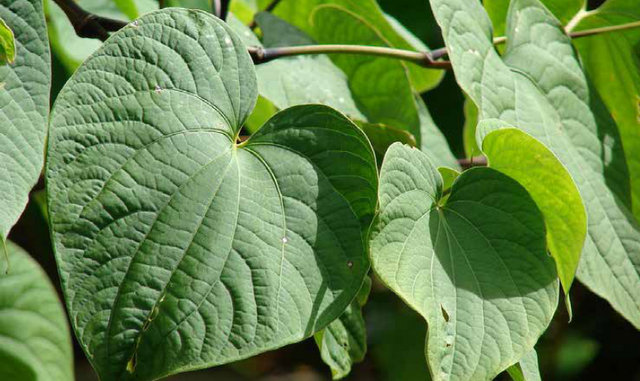This herbal remedy is brewing up significant anxiety and stress relief.
Kava is growing in popularity as an herbal remedy that is used to treat anxiety and range of other symptoms or conditions including insomnia, ADHD, stress, restlessness, psychosis, cancer, and benzodiazepine withdrawal to name just a few. It is important to know how and why patients are using it, as well as some of its potential side effects.
How it works: Kava is an extract of the Piper methysticum plant that is native to the South Pacific. In that region it is made into a drink and used socially. As with most herbal medications, there are many different preparations available and a variety of active compounds, and their concentrations/activity are not regulated. The root of the plant is used to create a tea-like drink in water. The root has the highest concentrations of at least 15 different kavalactones that have been identified as active compounds. The exact mechanisms are not fully known, but with at least 15 different active compounds the mechanisms are likely to be multiple and complicated. Reported mechanisms of some of the component chemicals include: inhibition of reuptake of norepinephrine and dopamine, inhibition of sodium and calcium channels, and potentiation of GABA receptor agonism. It has been shown to be more effective for anxiety compared with placebo, but a therapeutic dose and frequency of use have not been defined.
Notable History: Kava has been used for centuries in the South Pacific for personal, social, recreational, cultural, and religious purposes. It has traditionally been ingested either extracted in water (like tea), or chewed, and consumed culturally similarly to alcohol in Western cultures. More modern preparations and extraction methods that involve the use of organic solvents likely extract a different set of organic compounds than water extraction. The variety of the plant, the cultivation methods, and the part of the plant used can also affect the makeup and physiologic effects of the compounds that are extracted.
Recently in the news for: In more recent years, kava has gained popularity in the US, with ready availability of many different preparations of the extract. It is easily obtained in multiple forms on the Internet, and there are also kava bars that have opened up that serve kava-containing drinks. Rolling Stone magazine ran an article in 2018 touting the benefits of kava entitled “Kava: Inside the All-Natural High That’s Sweeping America.” Of course, simply because something is ‘all-natural’ does not mean that it is completely safe.
Adverse Events: Acutely, kava ingestion can cause increased effect of sedation when taking with alcohol, anxiolytics or sedatives. In the short term, it can interact with other medications, particularly those with CYP450 metabolism. With long, heavy use, a kava dermopathy can develop with dry, scaly skin over the palms, soles, and back. This is typically reversible when the user cuts down on kava use. The CDC and FDA have also raised concerns about the potential for liver injury or fulminant liver failure with kava use. The cases of kava-related hepatotoxicity appear to often be in concert with alcohol use or other potentially hepatotoxic medications. The form, dose or duration of kava consumption associated with liver injury haven’t been established. However, liver complications have been reported with both short and long term use of kava products.
Cost: Kava is available in a host of preparations from sources as mainstream as Amazon, where it is sold as tea, powder, capsules, and even candy! It is generally inexpensive, but there are reports of tolerance, which may lead to increased consumption and expense.
What you need to know: Patients may try to manage their symptoms of anxiety, stress, insomnia or benzodiazepine withdrawal with kava-containing products. Some people also seek its purported “transcendent” properties that make the user feel more at one with their surroundings and others. Because its use is not regulated, there are a range of different chemicals that may be present depending on the plant strain, the extraction method, and the preparation.
Kava is generally very well tolerated and safe, particularly in a water-based extract. However, in patients who have liver disease or who co-ingest alcohol or other potential hepatotoxins, there could be long-term liver damage. In addition, in the short term, ingestion with alcohol or other sedatives could lead to increased sedation. It is also important to be cognizant of the potential for medication interactions, given the activity on the CYP450 system.
References:
- Stickel F, Baumüller H-M, Seitz K, et al. Hepatitis induced by Kava (Piper methysticum rhizoma). J Hepatol. 2003;39(1):62-67. http://www.ncbi.nlm.nih.gov/pubmed/12821045. Accessed March 14, 2019.
- Ker K, Beecher D, Roberts I. Topical application of tranexamic acid for the reduction of bleeding. Cochrane database Syst Rev. 2013;(7)
- Bilia AR, Gallon S, Vincieri FF. Kava-kava and anxiety: growing knowledge about the efficacy and safety. Life Sci. 2002;70(22):2581-2597. http://www.ncbi.nlm.nih.gov/pubmed/12269386. Accessed March 14, 2019.
- Bressler R. Herb-drug interactions: interactions between kava and prescription medications. Geriatrics. 2005;60(9):24-25. http://www.ncbi.nlm.nih.gov/pubmed/16153141. Accessed March 14, 2019.
- White CM. The Pharmacology, Pharmacokinetics, Efficacy, and Adverse Events Associated With Kava. J Clin Pharmacol. 2018;58(11):1396-1405.



